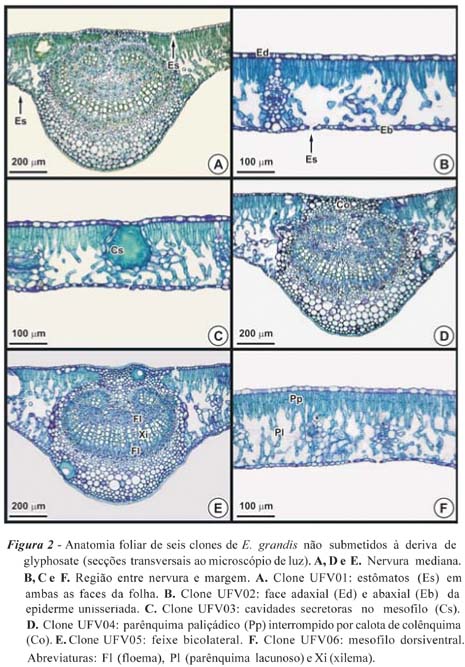Symptomatology is one of the most important criteria used to determine the damages caused by biotic and abiotic factors in plants. However, microscopic aspects are needed to elucidate intoxication mechanisms and early injury diagnosis. This work aimed to evaluate the effects of four commercial glyphosate formulations under simulated spray drift (Scout®, Roundup NA®, Roundup transorb® and Zapp QI®) on the morphoanatomy of six Eucalyptus grandis clones (UFV01, UFV02, UFV03, UFV04, UFV05 and UFV06). Following glyphosate application (129.6 g ha-1), symptoms were monitored daily and, at 14 days, leaf samples from the regions without visible symptoms were collected for microscopic analysis. All clones presented chlorosis and necrosis at the fourth day of glyphosate exposure, regardless of the formulation used. The UFV04 clone did not show any anatomical damage. The other clones suffered plasmolysis, cellular collapse, hypertrophy and formation of cicatrisation tissue. However, changes in leaf blade thickness were not observed. Plants exposed to Roundup transorb® presented the greatest visible intoxication percentage. Anatomically, plants exposed to Roundup NA® showed a higher number of damages. Analysis considering both anatomic and visible damages showed that UFV06 clone was the most susceptible to the formulations tested. The results confirmed the diagnostic and prognostic value of visual and anatomical analysis, respectively, and showed that these parameters are essential to evaluate clone susceptibility and the the phytotoxic potential of herbicides.
plant anatomy; herbicide; symptomatology








